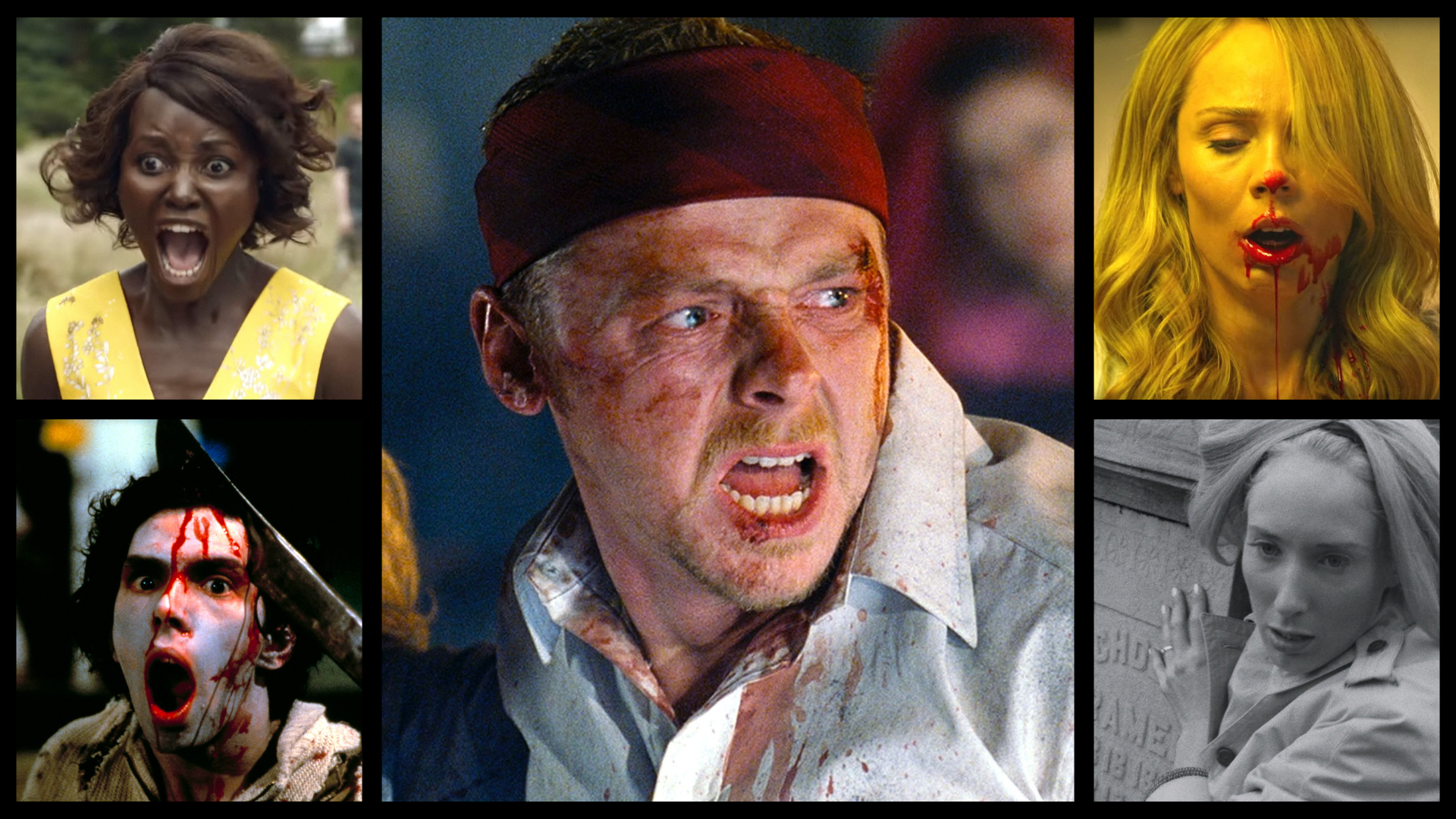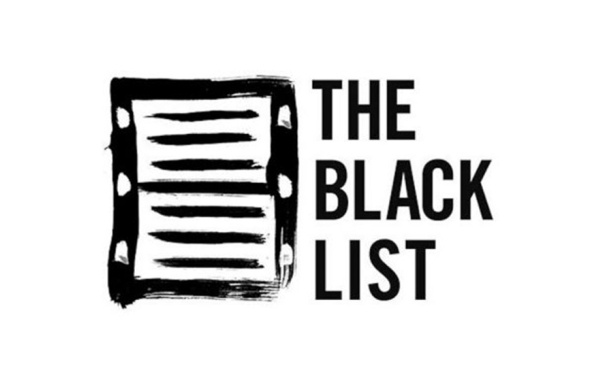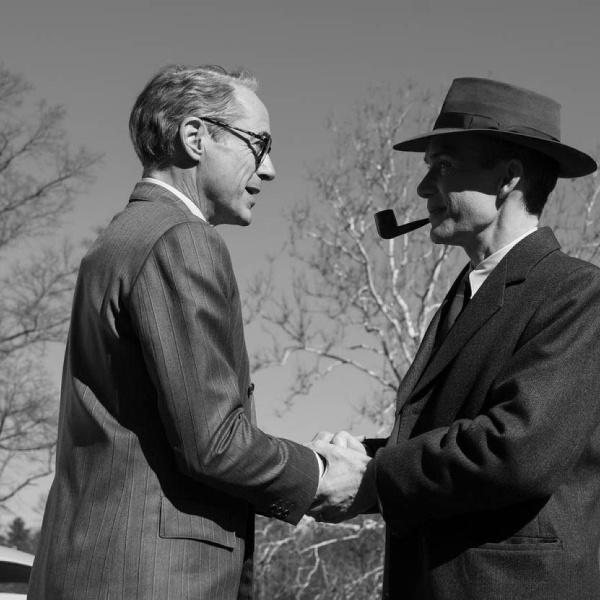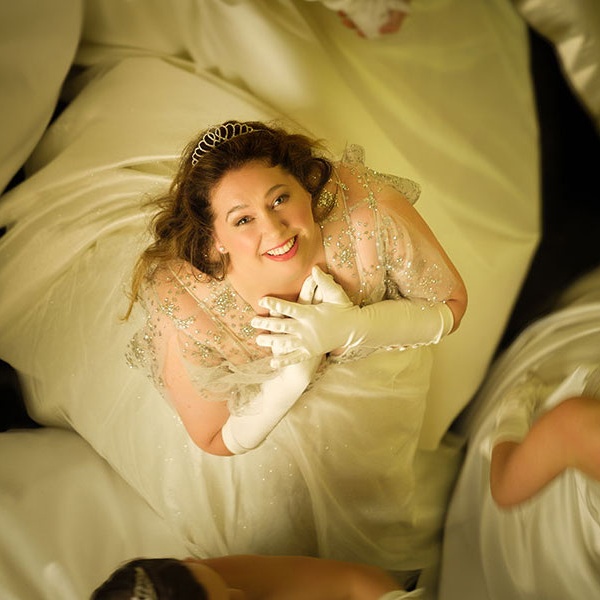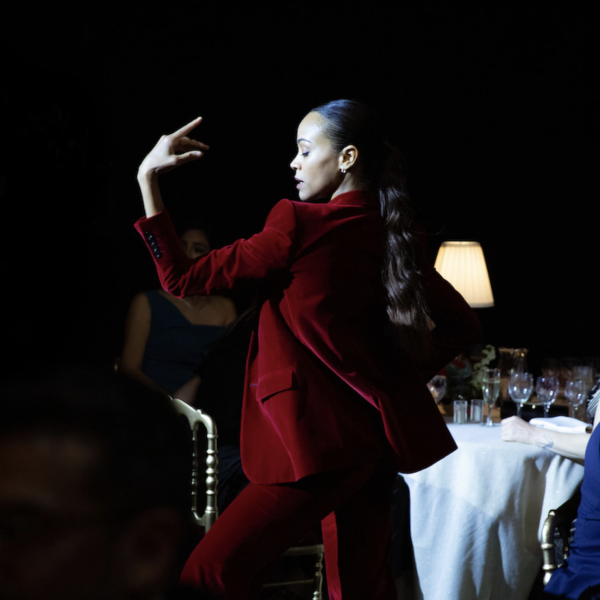When you’re putting together a list of the biggest taboos in Western culture, death itself might not make the cut. But it should: North Americans and Europeans are chronically averse to facing death. Too many of us quietly believe if we follow the right workout regimen, eat enough kale, and take the right expensive supplements we may just live forever. It’s a predictable belief for our youth-obsessed culture. So the intrigue of zombie movies is that this genre forces us to confront death face-to-face. Or rather, death confronts us, looking to scoop out our brains and have us join its ranks.
Sometimes, zombies can bear larger metaphors on their disintegrating shoulders — for our increasingly wired yet increasingly isolated post-internet world, say, as in “Shaun of the Dead.” But sometimes zombies are just zombies: walking corpses who shuffle around and remind us that, even if we’re never somehow reanimated, we’re actually going to look like this when we’re in the ground someday. How’s that for an endorsement of cremation?
Zombies have long been a tool for filmmakers for satire and contemporary critique. One of the very first zombie films was 1948’s “I Walked With a Zombie,” which very explicitly tackled racism, colonization, and the legacy of slavery. The film that really brought the genre to the mainstream, George A. Romero’s “Night of the Living Dead,” has been extensively analyzed for the racial implications of its story, particularly its notorious final scene. Other films that followed, like Romero’s “Dawn of the Dawn,” have used zombies’ quest for human meat as a stand-in for all-American consumerism. So, although some might see the zombie genre as overdone or shallow, history proves otherwise: these movies have brains.
Before you suddenly rush to make your funeral plans, give a close read to this, IndieWire’s ranked picks for the greatest zombie films ever made, updated in honor of the Halloween season. Entries are ranked, with consideration to their quality and their impact and influence on zombie cinema overall.
With editorial contributions by Christian Blauvelt, Wilson Chapman, Tambay Obenson, Eric Kohn, Ryan Lattanzio, Leonardo Adrian Garcia.
[Editor’s note: This list was originally published in 2019 and has been updated multiple times since.]
-
20. “Scooby-Doo on Zombie Island” (Jim Stenstrum, 1998)

Image Credit: Courtesy Everett Collection Most of the zombies films on this list are gorey, frightening, dark films meant for adults and adults alone. “Scooby-Doo on Zombie Island” is the complete opposite. The very first in a series of direct-to-vhs films starring the iconic Hanna Barbera character, the late ’90s home video favorite stars the Scooby Gang as they head to a mysterious, supposedly haunted island, after briefly splitting up due to boredom over all of the monsters they encounter merely being weirdos in costumes. But they’re shocked to discover that the monsters this time are very very real, and they’re forced to fend off hordes of terrifying zombies. Featuring great animation and a very slightly darker take on the classic and lovable Scooby formula, “Zombie Island” is the perfect first zombie movie for any kid to catch the genre’s bite. —WC
-
19. “Zombieland” (Ruben Fleischer, 2009)

Image Credit: Courtesy Columbia Pictures/Everett Collection Four travelers get the zombie apocalypse down to a science in Ruben Fleischer’s “Zombieland” duology. Ranking among IndieWire’s selection of the best horror comedies of the 21 century, the 2009 original film follows an underdog outcast (Jesse Eisenberg), an unpredictable cowboy (Woody Harrelson), a snarky gunslinger (Emma Stone), and her whip-smart younger sister (Abigail Bresline) on a road trip looking for lost loved ones and snack food that’s sweet but fleetingly sincere and consistently funny. Its sequel “Zombieland: Double Tap” catches up with the road warriors some years later, exploring their evolving relationships in a still zombie-ravaged landscape. —AF
-
18. “Dawn of the Dead” (Zack Snyder, 2004)

Image Credit: Universal It’s somewhat difficult to reconcile the Zack Snyder of the “Justice League” #SnyderCut, the far-too-faithful “Watchmen” adaptation, and the style over substance duo of “300” and “Sucker Punch” with the director at the helm of “Dawn of the Dead.” Which is not to say that Snyder’s 2004 remake of George Romero’s 1978 film of the same name lacks style. The opening 12 minutes serve as an opening salvo for his career, including one of the best opening title sequences in the genre’s history. This intro serves as an excellent kinetic counter to the film “Dawn of the Dead” is often compared to: Danny Boyle’s “28 Days Later,” predominantly due the inclusion of so-called “fast” zombies. The rest of “Dawn of the Dead” never really rises to the level of these opening moments, but the script from future “Guardians of the Galaxy” director James Gunn keeps things interesting throughout. It should be noted that remaking a masterpiece was a recipe for disaster (“disaster” being something that Snyder would again court when tackling the work of Alan Moore and the entire DC universe), but by eschewing Romero’s social commentary, Snyder was able to carve out his own corner of the cinematic zombie universe. And it’s a corner he’s set to revisit in 2021 with Netflix’s “Army of the Dead.” —LAG
-
17. “Little Monsters” (Abe Forsythe, 2019)

Image Credit: Hulu Here’s an unexpected flick from an actress who typically excels in dramatic roles: Lupita Nyong’o. But it looks like she’s having a ton of fun as a teacher of a kindergarten class that encounters a zombie outbreak during a field trip. The 2019 film was the actress’ second, although lesser known, effort in the horror genre that year (Jordan Peele’s “Us” being the high-profile other one). But she’s certainly up for the task. As the official press notes describe it, it’s a film “dedicated to all the kindergarten teachers who motivate children to learn, instill them with confidence, and stop them from being devoured by zombies.” Yes, that just about sums it up. “Little Monsters” also stars Josh Gad, who plays an obnoxious, famous child entertainer, and Alexander England, as an effete, has-been musician escorting his nephew on a field trip, who also happens to be in love (or maybe lust) with) Nyong’o. And so what you end up with is an unusual horror—romantic comedy mashup that juices up both genres.—TO
-
16. “The Beyond” (Lucio Fulci, 1981)

Image Credit: ©Aquarius Releasing, Inc./Courtesy Everett Collection A feverish and violently unhinged work from Italian giallo director Lucio Fulci, “The Beyond” is the second in the director’s informal “Gates of Hell” trilogy, and the most frightening and horrific of them all. Set in rural Louisiana, the film stars Catriona MacColl as a woman who inherits a hotel that just so happens to be a gateway to hell, inadvertently causing the undead to rise up and animated corpses to harass her and her friends. Featuring some unforgettable scares like tarantulas tearing off people’s eyelids and a disorienting storytelling structure that borders on the surreal, “The Beyond” is one of the nastiest and most purely enjoyable zombie films around. —WC
-
15. “ParaNorman” (Sam Fell and Chris Butler, 2012)

Image Credit: Laika Though ostensibly a family film about ghosts, seeing as how the title character communicates with those beyond the grave who have unfinished business, the second entry in Laika’s oeuvre (after the equally impressive “Coraline”) also contains a zombie plot that is simultaneously terrifying and touching. The stop-motion walking dead, rendered beautifully by Laika’s animators, serve as a cautionary tale about the errors of mob rule and fear-based judgments — an homage, perhaps, to Romero’s utilization of zombies as stand-ins for societal ills. Bolstered by an outstanding voice cast (Kodi Smit-McPhee, Anna Kendrick, Christopher Mintz-Plasse, Casey Affleck, Leslie Mann, Jeff Garlin, Elaine Stritch, John Goodman) and a script imbued with humor that subverts staid zombie tropes, “ParaNorman” is not just a gorgeous exercise in stop-motion, but the rare substantive zombie movie that can be enjoyed by the whole family. —LAG
-
14. “The Girl with All the Gifts” (Colm McCarthy, 2016)

Image Credit: Saban Films The story is set in a future where humanity is being destroyed by a disease that turns its victims into flesh-eating “hungries,” as they are called in the film. Only a small group of children seem immune to its effects, and they are therefore subject to study and experimentation to understand why, as.a vital resource in the search for a cure. Although one of them, a 10-year-old girl named Melanie, stands out from the rest. Melanie is “special.” She excels in the classroom, and is more inquisitive, resourceful, enterprising and creative than the rest… She’s the girl with all the gifts, which makes her valuable to both those who want to ensure that she’s taken care of, and those who want to control said gifts. When her base falls to the “hungries,” Melanie escapes. Against the backdrop of a fictionalized England in ruins, she now has to discover what or who she really is. The filmmakers didn’t have to cast a Black girl for the part, but they did, which gives the film fresh layers of urgency. —TO
-
13. “Night of the Living Dead” (George A. Romero, 1968)

Image Credit: Courtesy Everett Collection Not the first zombie movie ever — not by a long shot — but the one that codified the idea of zombies in the popular imagination and set the template for everything else to follow. Despite establishing so many tropes that could be reformatted into any number of films or TV shows, Romero, a Pittsburgh-based filmmaker who’d spent time working on “Mr. Rogers’ Neighborhood,” wasn’t just interested in providing scares but using those scares to reveal deeper truths. In this case, about how fragile a society kept divided by racism and class distinctions really is. The disparate group of people all huddled together in a cabin while the undead lurk outside are every bit as much at risk of tearing themselves apart. The African-American actor Duane Jones plays Ben, and though his race isn’t commented on so overtly, the fact he’s Black plays directly into what unfolds — as well as his ultimate fate. As a template, Romero seemed to rely on Orson Welles ‘“War of the Worlds” broadcast, at times inventively presenting story content as if it were news broadcasts. Brains may be zombies’ favorite food, but Romero wanted to give your brain some food as well.—CB
-
12. “The Last Man on Earth” (Sidney Salkow and Ubaldo B. Ragona, 1964)

Image Credit: Shutterstock Dr. Robert Morgan is the only survivor of a devastating worldwide plague due to a mysterious immunity he acquired to the bacterium. Now, he’s all alone… or so it seems. As night falls, plague victims begin to leave their graves, part of a hellish undead army that’s thirsting for his blood. Starring Vincent Price in a restrained performance, the 1964 film represented the very first attempt to adapt author Richard Matheson’s excellent 1954 post-apocalyptic horror novel, “I Am Legend,” for the screen. Decades later, Charlton Heston’s “Omega Man” (1971), and Will Smith’s “I Am Legend” (2007), would follow. Often cited as inspiration for Romero’s “Night of the Living Dead,” “Last Man on Earth” is hampered by its obvious low budget, but co-directors Sidney Salkow and Ubaldo B. Ragona keep the film engaging by making the smart decision to elevate the human story over spectacle. Although audiences of today may be spoiled by zombie movies with superior budgets and technological innovation, the film offers a more realistic conclusion to what might unfold in such an apocalyptic scenario. Don’t watch it for the shock and awe, or the often outlandish setups that can be expected in movies of its ilk. Instead, prepare to be immersed in the character-driven story, which should resonate deeper than B-movie frights or revulsion. —TO
-
11. “Ojuju” (C.J. Obasi, 2014)

Image Credit: Shutterstock When the water supply in an isolated Nigerian slum becomes infected, the neighborhood quickly morphs into a minefield of flesh-eating undead. Expectant father Romero (an amusing reference to “Night of the Living Dead” director George Romero) must weigh his instinct for survival against his anguish when his pregnant girlfriend begins displaying some strange symptoms. He joins forces with smart-aleck friend, Peju, and the pair attempt to escape the infested neighborhood, dodging zombified drug dealers, ex-lovers, friends, and more along the way. Incorporating ethnographic specifics of a Lagos shantytown gives the zombie movie a refreshing new wrinkle. Against this backdrop, the premise of contamination in a country of 190 million people, where close to half the population lacks access to clean water, results in a film that breaks beyond the boundaries of horror, and makes “Ojuju” more of a socio-political allegory. Made on a shoestring budget by a young, enterprising filmmaker, with a cast of actors mostly unknown in the West, the movie’s gritty, lo-fi aesthetic is perfectly suitable given the story and genre. Ultimately, Obasi’s stylized debut is an impressive subversion of the zombie genre, Nigerian style, and screams the arrival of a talent to watch. —TO
-
10. “28 Days Later” (Danny Boyle, 2002)

Image Credit: Shutterstock Danny Boyle’s dynamic, visionary take on zombie horror is absolutely terrifying. The film follows survivors struggling to make sense of the aftermath, 28 days after a viral epidemic ravages Britain in the form of a virulent and incurable sickness that leaves its hosts in a perpetual state of aggression, filled with uncontrollable rage. A gripping and realistic representation of a society totally crippled by a mysterious new disease, the film interrogates the possibility that the kind of blinding, violent fury it causes is something that already exists inside of us, and the virus simply triggers it. The answers are foggy, much like most investigations into the human condition.
But Boyle’s decision to shoot the film on consumer grade digital video cameras, as well as the naturalistic performances by its lead cast, gives “28 Days Later” a suitable grit and grime, and grounds it firmly in the real world, although it’s not without moments of surreal beauty. Beyond the typical genre thrills lies something even more horrifying: the erosion of humanity seen as a survival mechanism. What’s maybe scariest about “28 Days Later” is that the scenario it presents isn’t at all that hard to buy. —TO
-
9. “Cemetery Man” (Michele Soavi, 1994)

Image Credit: Shutterstock Michele Soavi’s surreal gothic fever dream stars Rupert Everett as a cemetery caretaker who might be losing his mind, but for the purposes of this brilliant movie, we’re right there with him. Everett’s Fracesco Dellamorte narrates an eerie routine in which the man battles undead who rise from the Italian graveyard after dark, forcing him to to engage in grisly showdowns on a nightly basis. As if that weren’t troubling enough, Francesco’s also a romantic loner; it’s only when he spots a young widow (Anna Falchi) burying her biker boyfriend that he sees the potential of true companionship. Needless to say, it doesn’t go quite as planned, as Francesco’s soon hunted by the living dead in ways he never could have anticipated. Aided only by his impish mute sidekick Gnaghi (François Hadji-Lazaro), Francesco careens through a magical, nightmarish showdown with the living dead suggests the ungodly love child of Fulci and Buñuel, right down to the dazzling apocalyptic finish. It’s the most original, poetic riff on the zombie concept ever made — a movie that suggests, with a surprising degree of subtlety, that we’re all a bunch of animated corpses searching on an inevitable quest to the great beyond. —EK
-
8. “Train to Busan” (Yeon Sang Ho, 2016)

Image Credit: Zero Media Yeon Sang-ho’s standout K-horror entry “Train to Busan” (2016) deftly balances unexpected, bloody bursts of comedy with a nail-shredding “Snowpiercer”-esque train ride through a zombie apocalypse.“The Age of Shadows” star Gong Yoo plays Seok-woo, a workaholic who’s distracted by his job in finance, and estranged from his kid daughter and wife, who lives in Busan. For her birthday, Seok-Woo agrees to agrees to take her to her mother in Busan via train from Seoul to Busan. But a meant-to-be-simple father-daughter journey turns into the ride from hell, as a virus of unknown origin rapidly spreads on the train, transforming victims into zombies in swift and hideous ways.Cinematographer Hyung-deok Lee (2010’s “The Housemaid”) crams us into chaotic train cars, with balletic choreography as Seok-woo and a pack of passengers try to survive — yet turn on each other. The film arrives at a heartbreakingly human conclusion that, despite the nasty blood bath it bookends, would make Bong Joon-ho proud. —RL
-
7. “Shaun of the Dead” (Edgar Wright, 2004)

Image Credit: Shutterstock Give it credit for having the single best Queen needle-drop ever in a film: “Don’t Stop Me Now” accompanies a showdown between a group of feckless Londoners and a zombie hoard inside a cozy pub. And give it credit for presenting a genuine worldview: Wright presents his hero Shaun, like most of the Londoners we meet, as being so caught up in 21st century distractions, so living in their own little bubbles that he and his friends don’t even notice that the zombie apocalypse is unfolding around them. At least, not until it’s almost too late. The first half of “Shaun of the Dead” is unclassifiably brilliant: calling it a “parody” feels too glib, and it certainly isn’t a standard horror movie. By the end, it adheres to more traditional zombie tropes. But even then, it’s an exceptional example of the genre. —CB
-
6. “Zombie” (Lucio Fulci, 1979)

Image Credit: Shutterstock “Zombie” is one of the most relentlessly apocalyptic of all zombie stories, with grisly makeup effects outclassing even the most ghoulish images conjured by Greg Nicotero for “The Walking Dead.” There’s something especially primordial, even biblical, about director Lucio Fulci’s grisly spectacle. The way the reanimated dead claw their way out of their graves, then walk around covered in dirt, looks like the most literal idea of Judgment Day: that dead souls haven’t passed on to an afterlife but have their own bodies revived to stand judgment for their sins. (As if to underscore that idea, the final showdown takes place in a church.) Kind of a bridge between the Haitian origins of zombie lore and the Romero-style zombies we’ve seen ever since “Night of the Living Dead,” the plot concerns itself with an heiress (Tisa Farrow, whose “acting” proves why she’s Mia’s far lesser-known sister) who journeys to a Caribbean isle in search of her missing father, only to be caught up in a zombie infestation that quickly spreads. The gory setpieces are certainly memorable, as Fulci even tries to one-up the eye-slitting shot in “Un Chien Andalou.” But it’s the overall sense of oddness that really distinguishes “Zombie,” epitomized by its most famous scene, an underwater chiller in which a zombie and a shark try to eat each other at the same time. Buon appetito! —CB
-
5. “REC” (Jaume Balagueró and Paco Plaza, 2008)
![Editorial use only. No book cover usage.Mandatory Credit: Photo by Filmax/Kobal/Shutterstock (5882923o)[Rec] (2007)[Rec] - 2007Director: Jaume BalagueroFilmaxSPAINScene StillRec](https://www.indiewire.com/wp-content/uploads/2019/10/REC.jpg?w=300)
Image Credit: Filmax/Kobal/Shutterstock Before the shot-for-shot American remake “Quarantine,” this claustrophobic Spanish found-footage effort brought a fresh dose of claustrophobia and terror to the zombie genre. A TV reporter and her cameraman are conducting a routine interview at a local fire station when an emergency call comes in. Accompanying the firefighters to a nearby apartment, the news team begins recording the blood-curdling screams coming from inside an elderly woman’s unit. After authorities seal off the building to contain the threat, the news crew, firefighters and residents are stuck facing a lethal terror inside. With the camera running, survival for everyone involved seems unlikely. “REC” is quite unsettling as it moves at a restless clip, using the found footage device to inject a new kind of immediacy to the zombie concept.
The plot is simple enough, and the cast is populated by stock characters, but the film overcomes the shackles of its tropes with pure energy and execution, including the absence of any music on the soundtrack until the end; it often really does feel like you’re watching a horrific document (one that continues with the same breathless momentum in the sequel). And as the unpredictability of the scares ratchets up from one act to the next, it’s impossible not to watch the movie with the lights off. —TO
-
4. “Rabid” (David Cronenberg, 1977)

Image Credit: Cinema Enterprises/Kobal/Shutterstock To choose between “Shivers” or “Rabid” as a Cronenberg title for a Best Zombie Films list: what a difficult task. Cronenberg’s early Canadian B-movie creepers are both great – it’s hard not to see “Shivers,” set entirely in a luxury condominium, as a prelude to the consumerist nightmare of “Dawn of the Dead,” – but “Rabid” is the more polished effort. A young woman (porn star Marilyn Chambers) undergoes major plastic surgery following an auto accident and acquires a phallic stinger under her armpit, as a result of the radical technique. Whenever men get a little too close to her, she unwittingly stings them, infecting these lusty brutes with a rage virus that brings all their most bestial impulses to the surface. One scene, in which she watches a XXX movie at a porno theater, results in one horny dude who wants to sit a little too close to her getting a lot more than he bargains for.
But the thing is, she never succumbs to the rage virus she’s carrying herself: presumably because it’s the “true selves” of her victims that are really being unleashed. That Chambers was an adult film actress in real life plays into the film’s overall critique of the condemnation of sex workers – who’ve been feared by society as carriers of disease since the beginning of time – and suggests that we should scrutinize the buyers more than the sellers. —CB
-
3. “Re-Animator” (Stuart Gordon, 1985)

Image Credit: Shutterstock Based on H.P. Lovecraft’s 1922 short story “Herbert West–Reanimator,” Stuart Gordon’s enduring campy gore-fest classic is one of the beloved horror movies ever for a good reason: Imagine Romero’s “Night of the Living Dead” directed by the staff of Mad Magazine. When medical student Dan Cain advertises for a roommate, he finds one in the form of Herbert West. Initially a little eccentric, it some becomes clear that West entertains some seriously outlandish theories, specifically about re-animating the dead. It’s not long before Dan finds himself under West’s influence, and embroiled in a series of ghoulish experiments that threaten to get out of hand.
Things get grisly when bone-saws are marshalled to quell the violent, re-animated cadavers, but “Re-Animator” isn’t just disturbing; it managed to make its grisly premise feel exciting and fun. Featuring a standout performance from Jeffrey Combs as the deranged West, the inventive and darkly witty movie remains the definitive example of 80s splatter pandemonium and one of the genre’s finest two hours.
Not for the squeamish, the film redefined screen horror then, and remains unmatched today. It spawned two inferior sequels and countless imitators. —TO
-
2. “I Walked with a Zombie” (Jacques Tourneur, 1943)

Image Credit: Rko/Kobal/Shutterstock “There is no beauty here, only death and decay,” the wealthy plantation owner says. “Everything good dies here…. Even the stars.” RKO horror maestro Val Lewton was firing on all cylinders when he produced this riff on the origins of zombie lore in voodoo legend. Director Jacques Tourneur gives this story of a young nurse brought to the small, fictional island of San Sebastian to tend to that plantation owner’s wife, who appears to have fallen under a voodoo curse for the sin of adultery, a remarkably eerie sense of melancholy and dread.
This producer-director team knew how to evoke terror through soft in-world music wafting from the distance, the whip of the wind through sea oats, the crash of surf on a zombie’s legs as he stares out at the sea. Goosebumps are a given, but the racial politics here are enough to charge your gray matter a bit as well: This is an early portrait of white colonizers fascinated and tantalized by the culture of oppressed Afro-Caribbeans while being determined not to understand or learn about them, even as they coopt their traditions. That appropriation has tragic consequences as one white character uses voodoo magic to turn the plantation owner’s wife into zombie – without having any real appreciation of the dire consequences that will unleash. —CB
-
1. “Dawn of the Dead” (George A. Romero, 1978)

Image Credit: United Film/Kobal/Shutterstock Yes, “Night of the Living Dead” is not in the Top 10. Make no mistake: It’s a brilliant film, the closest cinematic approximation of the style of Orson Welles’ “War of the Worlds” radio play, complete with fake news broadcasts, as it envisions a truly credible end of days. But “Dawn of the Dead” is the better film. A TV news producer escapes from the zombies assailing her studio in a helicopter with a few companions — but there’s only so much fuel. They land at an abandoned shopping mall surrounded by the walking dead… and proceed to live their best lives, plundering all the stores for luxury goods and diverting amusements. Of course, before these consumerist pleasures can be fully enjoyed by all, the zombies inside the mall have to be dispatched in a grisly “hunt” that makes you question whether the zombies are really the villains of the piece. After all, these undead are drawn to the mall for the same reason our living are: “It was a place that was important to them.”
Filmed largely inside the Monroeville Mall outside of Pittsburgh, “Dawn of the Dead” is a suspenseful splatterfest that serves as the delivery mechanism for a scathing critique of American capitalism, in which acquisitiveness naturally accompanies slaughter. Dario Argento helped George A. Romero get funding for this sequel – and contributed music along with his “Suspiria” music-makers The Goblins – and his affinity for striking colors seems to have rubbed off on Romero. And just try to get that closing credits theme, “The Gonk,” chosen by Romero from the DeWolfe stock music library, out of your heads. The kiddie xylophone vibe lends an unshakable theme park quality to Romero’s anti-consumerist satire. Who ever said theme parks can’t have ideas? —CB
